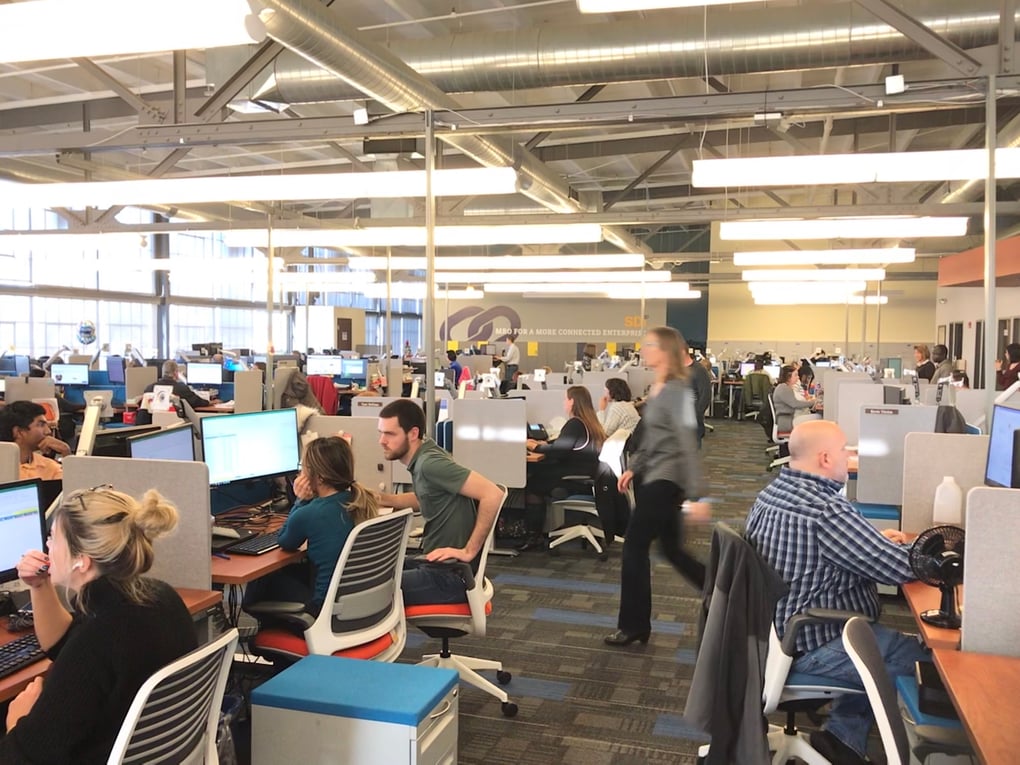
Client:SDI Inc.
Industry:High Tech
Region:North America
SDI Trains UiPath RPA Citizen Developers to Power Digital Transformation

10
citizen developers at SDI
20
citizen developers expected by 2022
10,000+
orders confirmed using RPA each month
Client Overview
SDI is a MRO supply company and service provider that builds streamlined, efficient, and scalable approaches to ensure MRO optimizations. Their mission is to change the way people think about and manage MRO, transforming MRO from a category of spend to value-creating, digital supply chain.
SDI is The Digital Supply Chain Company, but to support its digital transformation, the company has to scale automation without adding overhead. Time to enlist an army of citizen developers.
SDI Inc., the digital supply chain company, understands digital transformation and has embraced technological change in a big way with the help of robotic process automation (RPA). The company is rethinking business processes that haven't changed for years, using the lens of RPA to cut overhead and increase efficiency. As the company continues to expand its automation program, the executive team recognized that a two-person RPA team couldn't meet the growing demand. It was time to implement a citizen developer program with help from UiPath and Studio X. According to John Delligatti, Director, Digital Supply Chain Transformation at SDI, the initial part of RPA adoption was being able to determine where automation would yield the greatest returns. Departments had to assess their existing workflows to determine if RPA would offer a suitable solution, or if the entire process had to be re-engineered. "It's really the ability to ask 'why?'," Delligatti said. "It's not just sitting in a meeting and deciding to automate something. It requires context. What's the context, the bigger picture, and can we tie in more processes, or do we need to limit the scope? You have to factor all those things into it."

Click here to see the full interview with SDI's John Delligatti.
Delligatti notes that getting support from SDI executives has been a critical factor in removing barriers and ensuring RPA success. During the first nine months of deployment, much of the focus was on educating the rest of the organization and rejecting processes as RPA candidates because of inconsistent workflow or too many exceptions. As the criteria and potential RPA were better understood, demand for new automated processes escalated and soon there was a backlog of RPA requests. Since expanding the developer headcount wasn't an option, the alternative was to start training citizen developers.
People at all levels of the organization understand the power of RPA and work it into their plans.
John Delligatti Director • Digital Supply Chain Transformation SDI Inc.
Enlisting Citizen Developers
As part of the nine-month education process, Delligatti had to demonstrate to managers in various departments how RPA could simplify tasks and make their jobs easier. The goal was to select skilled citizen developers from multiple departments to pave the way for RPA adoption. Delligatti's ideal candidates for citizen developer training have technical acumen, understand computer basics, and have familiarity with data tools such as Microsoft Excel. "The people that were selected were an all-star team," Delligatti said. "They didn't have to be coders, but they did need to know how to do a VLOOKUP in Excel. I expected them to know how to walk through an IF Statement and understand how a computer makes a decision." Excel expertise proved to be an ideal prerequisite for RPA, since many of the Excel functions could be readily automated. "I was always comfortable with Excel and knew almost every formula," said Taryn Neals, a Sourcing Analyst and citizen developer for SDI. "Understanding UiPath was a learning curve, but what I learned is that I could transfer a lot of my knowledge to RPA. Now I will save all that time I was spending typing out formulas in Excel. I also come out of meetings and think, 'Hey, let's build a bot for that,' because I would rather do that than wasting time on data entry." “Getting involved with UiPath has changed my way of thinking about processes," said Jennifer Nguyen, Client Procurement Manager and citizen developer at SDI. "Rather than doing things in the usual way I start looking for similarities with other RPA processes and ask myself, ' Can I automate this?' Automating repetitive tasks gets them out of the way so I can get on with the more exciting parts of my day that need critical thinking." Joseph Vojtkofsky, the Director of Purchasing for the New York City Department of Education, an SDI client and citizen developer, immediately recognized the possibilities of RPA. As Joe explains, "It's not just the time savings with automation. It's the peace of mind knowing that when I click a button, the app is doing the same thing every time without error." Since recruiting his all-star team of citizen developers, Delligatti says the results have been outstanding. "The way we recognize savings is not necessarily in the P&Ls; we look at the macro-level of efficiency. We do track hours. But we do a lot of transactions, so we track the number of POs per headcount, and the number of POs that are kicked out because of errors in the process. Every discernible metric fell off a cliff when we developed a process to automate it."
Creating an RPA Culture
After two years, RPA has become an integral part of SDI's business culture. “People believe in it," said Delligatti. "I now see highly detailed project plans that include steps such as 'develop a bot because the client won't use middleware,' or something like that. People at all levels of the organization understand the power of RPA and work it into their plans." RPA has proven to be invaluable in providing solutions in several areas:
One of the first projects was developing a process for a new client to ingest data from more than 20 sites into Peoplesoft for production, use-acceptance testing, and development.
Automating reports also has been an RPA focus. For example, one employee spent 30 minutes each day extracting data from SharePoint, filtering it, formatting it, and emailing it to the team. That process is now totally automated.
Automating order verification, including confirming orders, verifying tracking numbers, and handling rush backorders. Using RPA to handle tens of thousands of purchase orders each month ensures accuracy that yields tremendous returns.
One of the most recent accomplishments was developing a bot to track packages as part of UPS shipping integration. Now, any SDI shipment can be automatically tracked through the UPS system. Delligatti urges any organization considering RPA to get started and not worry about the learning curve—the results are sure to come. "We have all seen the digital transformation pit of despair, where you continue to see the promise, but the execution is so hard," he said. "I would tell anyone getting into RPA that you will have some struggles, but you will also see tremendous benefits, personally, professionally, and as an organization."

See the full interview with SDI's citizen developers.
Understanding UiPath was a learning curve, but what I learned is that I could transfer a lot of my knowledge to RPA. Now I save all that time I was spending typing out formulas in Excel.
Taryn Nealsa • Sourcing Analyst and citizen developer for SDI
Related case studies
Ready for your own case study?
Speak to our team of knowledgeable experts and learn how you can benefit from agentic automation.





